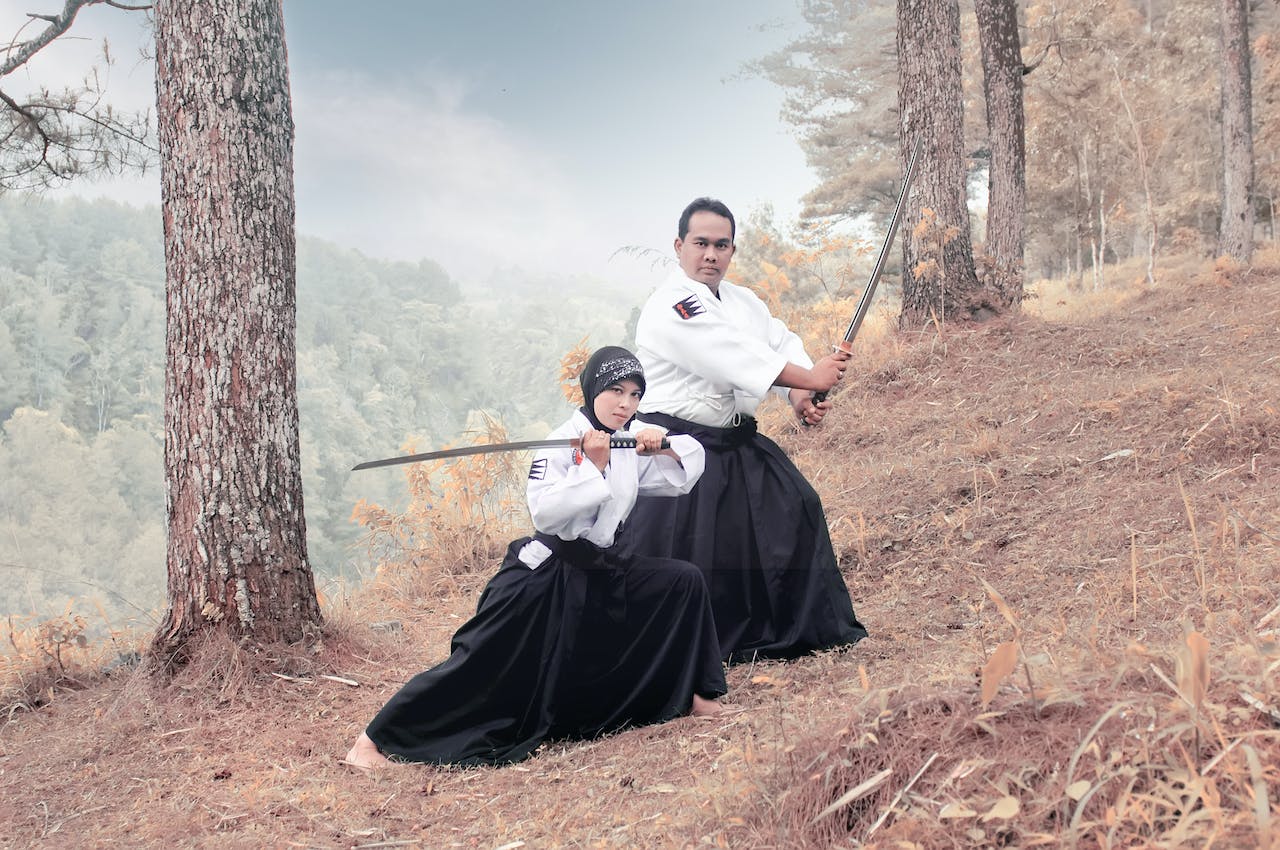The Japanese Katana is more than a sword; it is a cultural treasure, a symbol of Japan's martial heritage, and a testament to the artistry of Japanese swordsmiths. Continue reading →
In the rich tapestry of Japanese history, one symbol stands out as a timeless masterpiece in the realm of swordcraft—the Katana. Revered for its lethal precision, striking beauty, and deep cultural significance, the Katana is more than a weapon; it is an emblem of Japan’s martial heritage and the valor of the samurai.


The origins of the Katana can be traced back to the Kamakura period (1185–1333), a pivotal era marked by feudal wars and political upheaval. Swordsmiths, known as “tosho,” began perfecting the art of sword making during this period, ultimately giving birth to the iconic Katana. Characterized by its distinct curvature, single-edged blade, and long grip, the Katana’s design is both functional and elegant.
The Katana’s development wasn’t merely about crafting a sharp blade; it was a fusion of metallurgical expertise and spiritual significance. The swordsmith’s craft involved a meticulous process of selecting high-quality Japanese katana steel, often sourced from iron sand, and employing techniques like heating, folding, and tempering to create a blade that was not only razor-sharp but also resilient.
Central to the allure of the Katana is the intricate craftsmanship involved in its creation. The process is a delicate dance of fire and steel, with each step contributing to the sword’s overall quality. The differential hardening technique, known as “hamon,” is a hallmark of Katana craftsmanship. By varying the temperature during quenching, a visible line is created along the blade, distinguishing the harder, sharp edge from the softer, more flexible spine.
The choice of materials and the methodical folding of the steel serve to eliminate impurities, resulting in a blade that is not only lethal but also a work of art. The significance of the Katana’s form is not lost on those who wield it or those who appreciate it from afar—it is a testament to the mastery of the swordsmith and the embodiment of Japanese aesthetic principles.
Beyond its physical attributes, the Katana holds profound cultural significance in the ethos of the samurai. These revered warriors adhered to a strict code of conduct known as “bushido,” the way of the warrior. The Katana was not just a tool for battle; it was an extension of the samurai’s soul, representing honor, loyalty, and discipline.
The rituals surrounding the Katana in the life of a samurai were intricate and symbolic. From the careful maintenance of the blade to the specific way it was worn, the Katana was not just a weapon but a symbol of the samurai’s identity. Even in times of peace, the Katana was a constant companion—a reminder of the warrior’s duty and a connection to a lineage of warriors that came before.
As Japan transitioned from feudalism to a more centralized government during the Edo period (1603–1868), the role of the samurai changed, and with it, the significance of the Katana evolved. The decline of the samurai class did not diminish the reverence for the Katana; instead, it transformed into a symbol of status, family heritage, and craftsmanship, katana collection: https://www.truekatana.com/catalog/japanese-samurai-swords/katana
The Katana became an art form, with skilled swordsmiths producing blades not only for practical use but also as expressions of artistic prowess. Families treasured their Katana, passing them down through generations, each sword telling a story of the past and connecting the present to a legacy of martial skill.
In the contemporary era, the Katana continues to captivate enthusiasts, martial artists, and collectors worldwide. Its enduring design and cultural significance have transcended time and borders. Practitioners engage in disciplines like “iaijutsu” and “battojutsu,” focused on the drawing and cutting techniques of the Katana, preserving the traditional methods of Japanese swordsmanship.
Collectors covet authentic, antique Katana not only for their historical value but also for the craftsmanship that went into their creation. The demand for quality replicas has surged, allowing enthusiasts to appreciate the Katana’s beauty and functionality without the constraints of rarity and cost associated with genuine antiques.
The international trade of Katana is not without its controversies. Japan, recognizing the cultural importance of these swords, imposes strict export restrictions on genuine antiques. This has sparked debates about preserving cultural heritage versus enabling access for enthusiasts outside of Japan.
Yet, despite these controversies, the Katana’s influence has spread far beyond Japan. In popular culture, it has become an enduring symbol, featured prominently in literature, film, and video games. From classic Japanese tales to modern cinematic masterpieces, the image of a samurai unsheathing a Katana is iconic. Even in Western contexts, the Katana has left an indelible mark, inspiring characters and weapons in various genres.
In conclusion, the Japanese Katana is more than a sword; it is a cultural treasure, a symbol of Japan’s martial heritage, and a testament to the artistry of Japanese swordsmiths. From its humble beginnings in feudal Japan to its global resonance in the 21st century, the Katana stands as a timeless masterpiece in swordcraft. Its elegant design, lethal precision, and deep cultural significance make it a symbol not only of a bygone era but also of the enduring spirit of the samurai. Whether displayed in a museum, wielded in martial arts practice, or admired in a collector’s showcase, the Katana continues to command respect and fascination, transcending its role as a mere weapon to embody the essence of Japanese history and craftsmanship.
More types of consensus mechanisms exist, including PoCo, PoB, PoDA, and PoA. Each excels in…
Adopting cloud computing, leveraging automation, robust cybersecurity, and collaboration are all critical elements of a…
Utilizing optimal ISP proxies facilitates global network reach while instilling the confidence associated with local…
Nutrition and hydration play essential roles in our work performance. We can plan balanced meals…
Sharing our gardening experiences creates bonds and enhances our well-being. We can exchange produce, recipes,…
Whether it’s increasing traffic, boosting credibility, targeting local customers, or gaining a competitive edge, the…